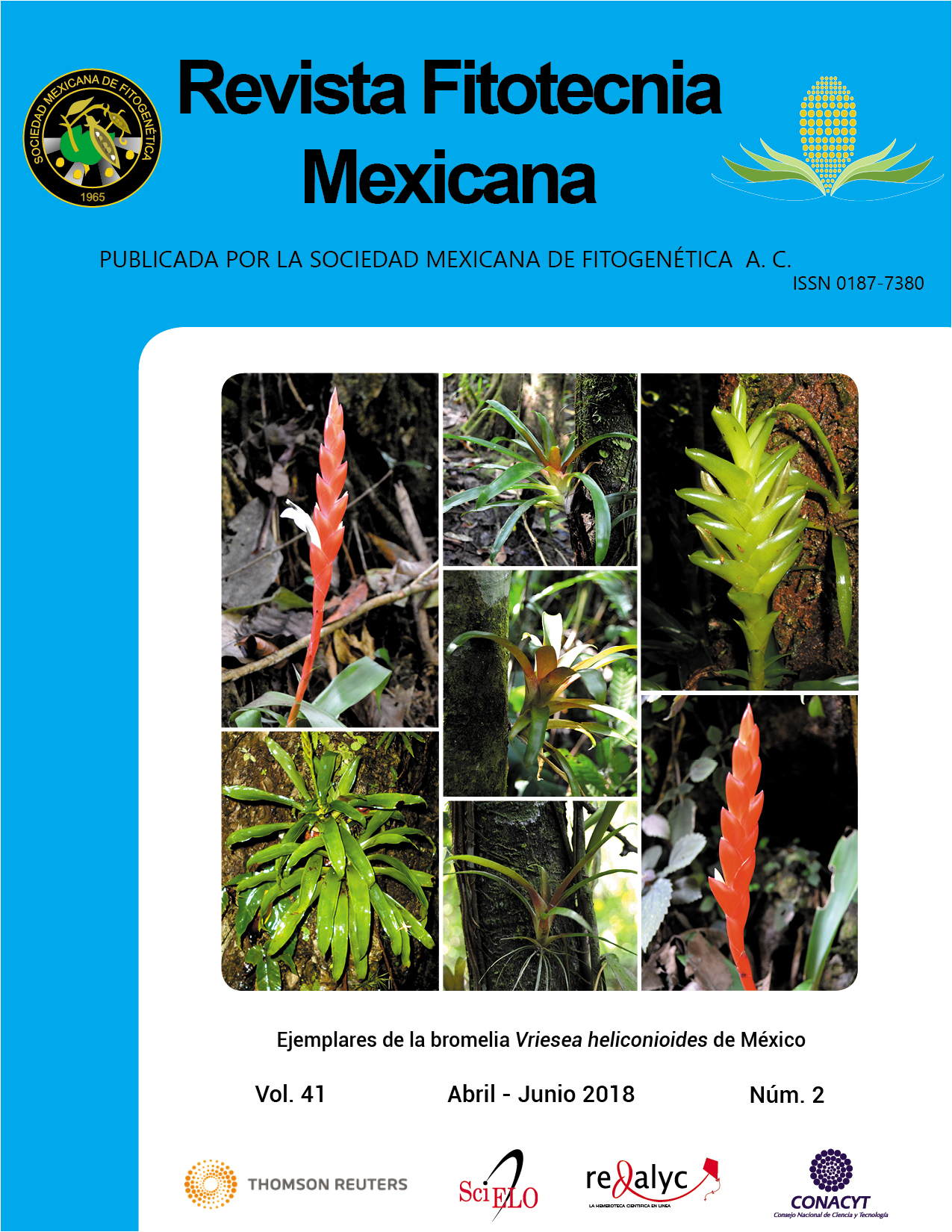HETEROTIC EFFECTS IN DOUBLED HAPLOID MAIZE INBRED LINES WITH WHITE GRAIN AND HIGH OIL CONTENT
Main Article Content
Abstract
Hybridization schemes based on doubled haploid lines (DHL) can be structured to develop productive high oil content (HOC) maize (Zea mays L.) hybrids that impact the livestock and food industry in Mexico in the short term. The objective of this study was to determine, through direct and reciprocal crosses, genetic effects underlying grain yield, agronomic characteristics and oil content of nine HOC white kernel DHLs. Five DHL were derived from Northwest White Population (NWP) and four from Bajio White Population (BWP), which are heterotically opposite. The possible crosses were formed during the Spring-Summer 2013 in Celaya, Gto. and they were evaluated in Spring-Summer 2014 in Celaya, Gto. and Tarímbaro, Mich. Data on grain yield (GY), days to pollen shed (DPS), plant height (PH) and grain oil content (GOC) were recorded. Results showed highly significant differences (P ≤ 0.01) between localities (L) and genotypes (G) for all traits. The G × L interaction was highly significant (P ≤ 0.01) for GY and DPS. General and specific combining ability (GCA) and (SCA) effects were significant (P ≤ 0.01) for all the traits, and GCA predominated over SCA. Maternal effects showed statistical differences (P ≤ 0.01) for GY. For GCA effects, line PBN DH 10 presented large effects for GY, DPS and PH, and line PBB DH 178 presented the highest effects for GOC. In regard to SCA, combinations with high and significant effects were observed for all traits. The type of gene action of the evaluated traits was determined, and it was observed that DHLs with higher GCA participated in high SCA crosses. High oil content crosses were observed with grain yield above 12.2 t ha-1. The DHL derived from NWP and BWP maintained the heterotic pattern already established between both populations.

